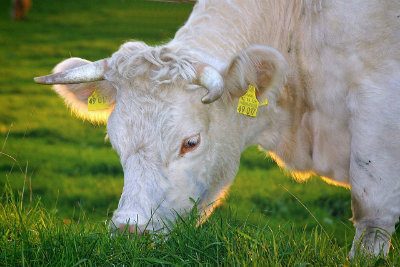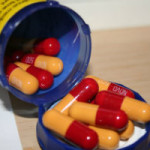What Does The Organic Label Really Mean?
When something becomes very popular, it inevitably attracts the interest of companies and investors who want to get in on and capitalize on the current trend. Much like the large pharmaceutical industry, the primary interests of the provider are not health promotion. Profit is paramount to companies even if they are promoting health or healthy products, enter the organic food market. Organic food produce and products are currently trending as big and  lucrative business.
lucrative business.
According to The Organic Trade Association, last year the total money spent on organic food and organic products was more than $39 billion. In the United States, out of all food produced and marketed, organic food accounted for nearly 5 percent of all food sales. Considering that it is more expensive to purchase food that is certified as organic, that is an amazing accomplishment for various stakeholders.
What Does The Label “Organic” Actually Mean?
In order to gain organic certification, the organic farmer must have the following in place:
- Use land that has not grown produce in conventional methods for a minimum of three years.
- Synthetic herbicides or pesticides should not be used except those approved by the USDA.
- Seeds which have been modified by genetic methods must not be sown.
Accordingly, seeds used must also meet other specific standards as laid out by the National Organic Guidelines for Choosing Organic Food which is controlled by the government.
Guidelines For Understanding Food Labeling Codes
If you are uncertain about the origins of produce you are about to spend good money on, understanding what different codes stand for will go a long way.
Since 1990, Price Look Up (PLU) codes appear as four to five digit numbers on labels which have been placed on produce that is for sale. The PLU number shown indicates the history of produce items based on several factors such as variety, commodity, the methodology of produce growing and size.
These specific numbers are assigned to produce by the IFPS following intense review and screening at both international and national levels. If the four-digit number on the label is preceded by the number nine, this indicates that the produce was grown organically. Therefore, any food item labeled with a five-digit number that begins with nine indicates that the produce is certified as organic. Conventionally grown produce has a four-digit code starting with a three or four. GMO produce has a five-digit code starting with an eight.
Official Labeling On Goods
Any product considered to be organic in the United States is always considered only truly organic if the conditions mentioned above are actually met. You can be sure that
- The produce for sale carries the official label of the U.S. Department of Agriculture, the USDA Organic Seal.
- The produce for sale has been certified organic.
The official term in the United States for organic products which genuinely meet the organic standards of the USDA to be labeled organic is ‘certified organic”. Sometimes official labels may say, “USDA certified organic.” If you see  products that are only labeled as “organic” it does not necessarily comply with or meet the USDA organic standards. These standards have been utilized since 2002.
products that are only labeled as “organic” it does not necessarily comply with or meet the USDA organic standards. These standards have been utilized since 2002.
The Bottom Dollar Truth
Organic food and products were once small, homegrown enterprises. The methods used for growing were genuine and honest and the demand from the limited customer base was small. Currently, with corporate involvement in the organic market, the prevailing goal is profit. Corporations, for the most part, are thinking of the bottom line for them which can put your health at risk. This leaves you vulnerable to exploitation. Knowledge gained through research empowers you as you make choices.







